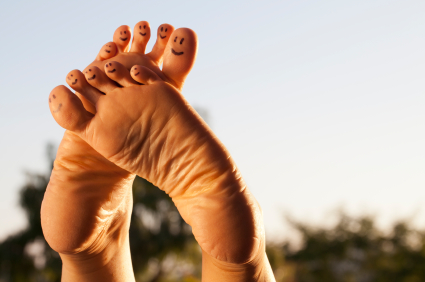When the body’s pancreas is unable to produce a hormone called insulin, which is essential for proper blood sugar utilization, it results in an autoimmune disease called diabetes. Those with diabetes cannot convert blood sugar into a form that can be used by the cells thereby resulting in abnormally high blood sugar levels, circulatory problems and nerve damage. Unfortunately, diabetes cannot be cured, but it can be treated and managed with proper medical care, dietary control, and exercise. Diabetes is a growing problem currently now reaching more and more into the younger population. Unfortunately, many people are not aware that they have the disease.
Diabetes can cause potential problems with the legs and feet. Deterioration of the nerve functioning in the body’s extremities is the most common reason for diabetes-related hospitalization, and amputation of the lower leg and foot. Numbness, weakness, tingling in the extremities, shooting pains, or a burning sensation may result in a patient not seeking timely treatment for cuts, bruises, burns or blisters that heal poorly; therefore, possibly worsening and becoming infected.
When diabetes is not controlled, wounds and injuries are difficult to heal. This is especially true of wounds in the feet. The deterioration of the nerves often renders the patient unaware of any such wound that adds to the danger of the wounds. When the feet are routinely confined in shoes, a hot, moist environment, the shoes can cause friction, rubbing, and tearing of the skin, all conducive to infection. Injuries are very common to the feet and it is important to pay special attention to the area. One you can help protect your feet from these injuries is by finding the proper footwear, including socks, to accommodate your needs appropriately. Wigwam carries socks that fit loosely, which are great for people who are living with diabetes. We also recommend that you wear footwear with wider widths so your feet are not constricted.
Total daily health care is extremely important. Monitoring of blood glucose levels, eating a balanced diet, exercising, inspecting the feet and regularly seeing a physician for any problems that may have arisen. Checking feet daily should include using the hands to feel for hard or dry skin, redness or cracking. A podiatrist may recommend that custom-molded orthotics and/or shoes be made. These precautions can help prevent the feet from becoming ulcerated or infected.




